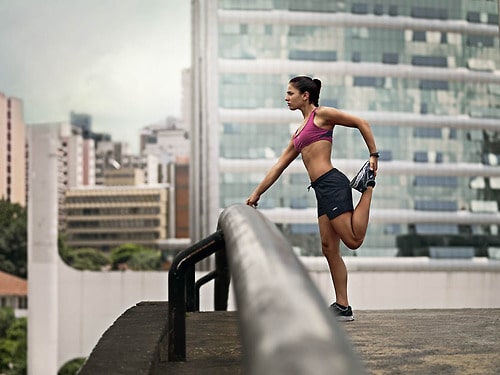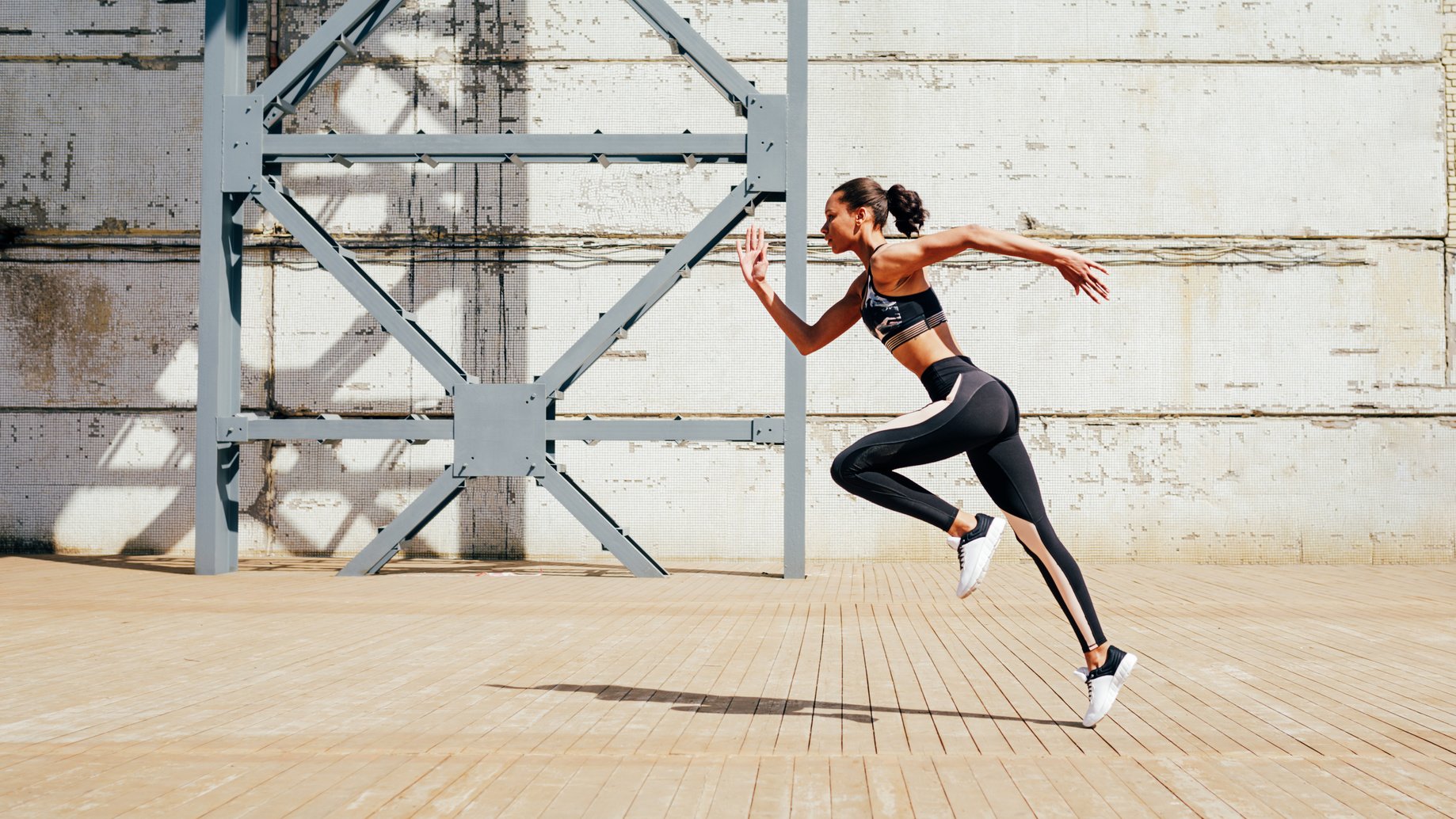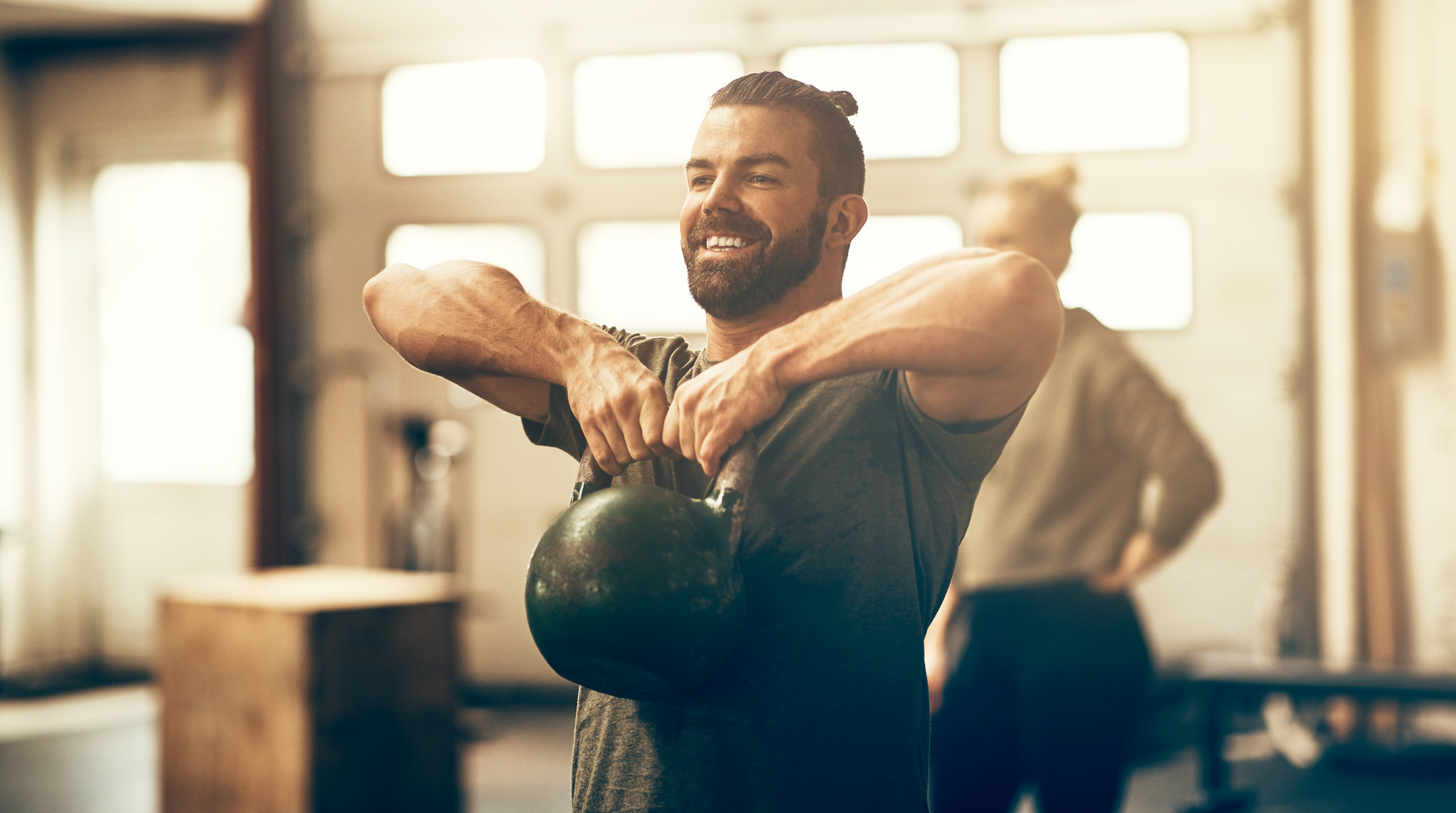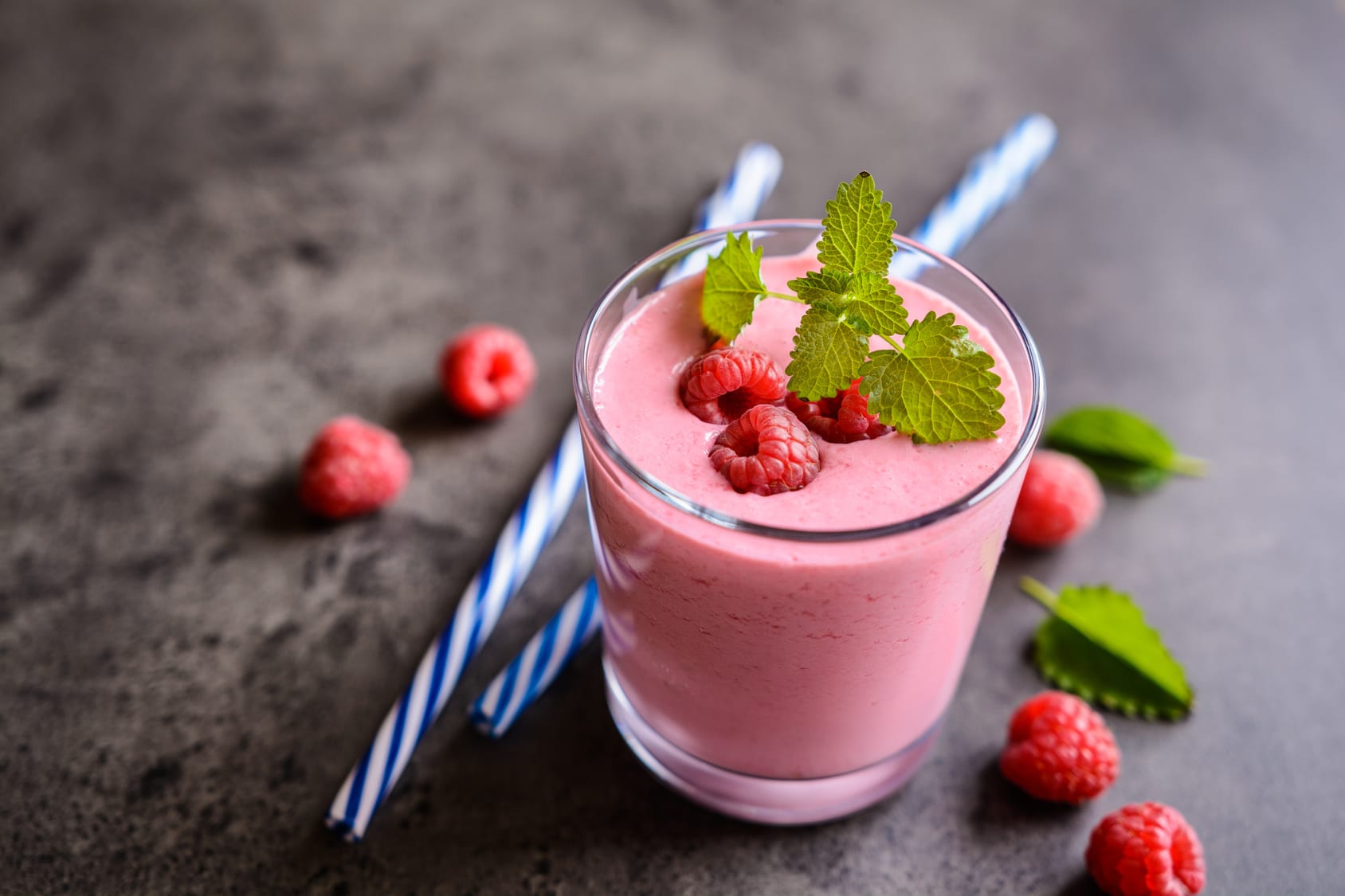Ever wondered how you stack up when it comes to your physical fitness? I’ve got you covered with not one, not two, but a dozen fitness assessments that’ll give you a real-deal snapshot of your fitness game
Let’s break it down: Fitness isn’t just about how many miles you can run or how much iron you can pump; it’s a finely tuned orchestra of various physical abilities.
We’re talking cardiovascular endurance, muscular endurance, muscular strength, flexibility (we all want to touch our toes, right?), and the nitty-gritty of body composition.
So, why these tests? Because they’re the ultimate litmus test for your fitness journey.
These assessments aren’t just about numbers; they’re your starting point. Whether you’re on a quest to conquer a marathon, reach peak athletic performance, or simply boost your overall fitness, these scores are your trusty compass.
Ready to lace up those sneakers and dive into this fitness adventure? Let’s get started!
Speed and Anaerobic Power
Whether your main running goal is to qualify for the Boston Marathon or finish a 5K run in less than 30 minutes, speed is of vital importance.
After all, every runner wants to run faster
As a runner, testing your speed is a no-brainer.
Nonetheless, if you have never tested your speed, you can’t really know how fast you are.
Here is a test that can help.
200-Meter Sprint
If you’re ready to unleash your inner sprinter and want to measure your explosive power, the 200-meter sprint test is an excellent way to do it. Here’s how to go about it:
The Test Procedure
Warm-Up: Begin with a thorough 5-minute warm-up. This can include light jogging, dynamic stretches, and mobility exercises to prepare your muscles and joints for action.
Progressive Sprints: After the warm-up, start with a series of sprints, gradually increasing your speed with each round. This helps you transition into the all-out effort of the 200-meter sprint.
All-Out Sprint: When you feel sufficiently warmed up and ready, set a stopwatch or have a partner time you. Sprint 200 meters with maximum effort. This means giving it everything you’ve got from start to finish.
Scoring: How Fast Are You?
Your time in the 200-meter sprint can provide insight into your explosive speed and anaerobic power. Here’s how to interpret your performance:
- More than 50 seconds: This indicates a relatively poor performance in terms of explosive speed.
- 40 to 50 seconds: Considered average, but there’s room for improvement.
- 25 to 40 seconds: A time in this range is good and shows a solid level of sprinting ability.
- Less than 25 seconds: An excellent time, demonstrating outstanding explosive speed.
Beyond Speed: Endurance Matters
While the 200-meter sprint assesses your burst of speed, remember that being a well-rounded runner isn’t just about quick bursts. Endurance plays a significant role in your overall performance and stamina.
To excel as a runner, it’s crucial to incorporate endurance training into your regimen. This might include longer runs, interval training, and a focus on cardiovascular conditioning to complement your sprinting prowess.
Two-Mile Run
For those looking to gauge their endurance and aerobic capacity, the two-mile run test is a classic and reliable choice. Let’s break it down:
The Test Procedure
Warm-Up: Always begin with a thorough warm-up. This should include light jogging to raise your heart rate, dynamic stretches to loosen up your muscles, and mobility exercises to ensure your joints are ready for action.
The Run: Once properly warmed up, head to a track (a standard 400-meter track is ideal) or any measured course. Your goal is to run two miles (approximately eight laps on a standard track) as fast as you can.
Scoring: What’s Your Pace?
Your time for the two-mile run can provide valuable insight into your endurance and cardiovascular fitness. Here’s how to interpret your performance:
- More than 20 minutes: This suggests that your endurance could use improvement and may be considered poor in terms of aerobic capacity.
- 15 to 20 minutes: An average time that shows a decent level of endurance, but there’s room for enhancement.
- 12 to 15 minutes: A time in this range is good and indicates a solid level of aerobic fitness.
- Less than 12 minutes: An excellent time, demonstrating exceptional endurance and cardiovascular fitness.
Why Endurance Matters
While sprint tests like the 200-meter dash assess your explosive speed, the two-mile run focuses on a different aspect of your running capability – your ability to sustain effort over a longer distance.
Endurance is a key component for distance runners and crucial for achieving and maintaining a consistent pace during longer races.
Upper Body Strength
When it comes to running, we often focus on the legs but don’t overlook the importance of upper body strength. A strong upper body contributes to better posture, running form, and overall running economy. Here are two simple tests to assess your upper body strength:
3. Push-Ups Test: Building Upper Body Endurance
Test It: Begin with a proper warm-up that includes dynamic upper-body stretches. Then, get into a push-up position with your hands shoulder-width apart and your body in a straight line from head to heels. Lower your chest to the ground and push back up.
Perform as many push-ups as you can with proper form—keep your back straight and legs fully extended throughout the exercise.
Score It:
- 10 or less: This indicates that there’s room for improvement in your upper body endurance.
- 15 to 30: A decent score, showing an average level of upper body strength.
- 30 to 40: A good score, indicating solid upper body strength.
4. Pull-Up Test: Unleash Your Upper Body Power
Test It: For this test, you’ll need a pull-up bar. Grab the bar using an underhand grip, with your palms facing your body, and your arms fully extended. Hang from the bar, then pull your body up until your chin is above the top of the bar. Do as many pull-ups as possible with good form.
Score It:
- Six or fewer: This suggests that you may want to work on your upper body strength.
- 6 to 12: An average score indicating a moderate level of upper body power.
- 12 to 20: A good score, reflecting strong upper body strength.
- 20 and more: An excellent score, showing exceptional upper body strength.
Bench Press
The bench press is a classic exercise that targets the muscles of your chest, shoulders, and triceps. It’s not just about building muscle; it’s also a measure of your upper body strength.
Let’s break down the bench press test:
The Test Procedure
Test It: To perform the bench press test, you’ll need access to a bench press machine and a barbell. Here’s how it works:
Begin by getting into the bench press machine. Keep your feet planted firmly on the ground and engage your core throughout the exercise.
Lower the barbell down until it reaches your mid-chest. Pause briefly at the bottom, then push the barbell back up to the starting position.
Perform this motion for one repetition.
Score It:
Calculate your score by dividing the maximum one-rep bench press weight you can lift by your body weight.
Scoring Guide
- Less than 1.0: This score suggests that you may want to work on your upper body strength, specifically in the bench press exercise.
- to 1.50 bodyweight: Falling into this range is a good sign and indicates solid upper body strength relative to your body weight.
- 5 or more: An excellent score! This indicates that you have exceptional upper body strength, lifting more than one and a half times your body weight in the bench press.
Core Strength
A strong core is your secret weapon for improved running performance and injury prevention. Your core muscles, including the upper and lower abs, obliques, and glutes, play a pivotal role in maintaining good running form. Let’s put your core power to the test with two effective exercises:
6. Crunches: Core Endurance Test
Test It: To perform crunches, follow these steps:
Lie on your back with your knees bent and feet flat on the floor, keeping your heels touching.
Place your hands behind your head with your elbows out. Engage your core muscles and lift your upper body off the ground, aiming to touch your elbows to your knees.
Do as many crunches as you can in one minute while maintaining good form.
Score It:
Interpret your score based on the number of crunches you complete in one minute.
- 15 or fewer: This score indicates that you may want to focus on improving your core endurance.
- 15 to 30: Falling into this range is considered average and signifies a moderate level of core endurance.
- 30 to 50: A score in this range is good, reflecting solid core endurance.
- 50 and more: An excellent score! It suggests that you have exceptional core endurance.
7. The Plank: Core Stability Challenge
The plank is a fantastic exercise for assessing your core stability. Here’s how to do it:
Assume a plank position with your forearms resting firmly on a mat, legs extended, and core activated.
Keep your body in a straight line from head to ankles.
Hold the plank as long as you can while maintaining good form.
Score It:
Your score is determined by the duration you can hold the plank with proper form.
- Less than one minute: This score suggests that you may need to work on building core stability.
- One to two minutes: An average score that indicates a decent level of core stability.
- Two to three minutes: A good score, signifying strong core stability.
- More than three minutes: An excellent score! It means you have exceptional core stability.
Why Core Strength Matters for Runners
Core strength is the foundation of a strong, stable running form. It helps you maintain proper posture, balance, and control throughout your runs, reducing the risk of injuries and improving overall performance.
Lower Body Strength and Endurance
Strong and balanced lower body muscles are essential for runners. They not only propel you forward but also help prevent overuse injuries. Let’s assess your lower body strength and endurance with a classic exercise – the bodyweight squat:
8. Bodyweight Squat: Lower Body Endurance Test
To perform bodyweight squats, follow these steps:
Assume a shoulder-width stance, with your feet about hip-width apart. Keep your back straight and your knees tracking behind your toes throughout the exercise.
Perform as many squats as you can in three minutes while maintaining good form.
Score It:
Determine your score based on the number of squats completed in three minutes.
Scoring Guide for Bodyweight Squats
- Less than 50: This score suggests that you may need to work on your lower body endurance.
- 50 to 100: Falling into this range is considered average and indicates a moderate level of lower body endurance.
- 100 to 200: A score in this range is good, reflecting strong lower body endurance.
- 200 and more: An excellent score! It means you have exceptional lower body endurance.
Flexibility and Mobility: Unlock Your Running Potential
Runners often struggle with tight hamstrings and calves, which can lead to overuse injuries like Runner’s Knee and ITB syndrome. To assess your flexibility and mobility, let’s go through three tests:
9. Test 1: Hamstring Flexibility
Test It: Sit on the floor with one leg extended straight and the other leg bent so that the sole of your foot touches the inner thigh of the extended leg. Reach forward toward your toes while keeping your back straight.
Score It:
Interpret your score based on how close you can reach to your toes without straining.
Scoring Guide for Hamstring Flexibility
- Not able to touch your toes: This may indicate limited hamstring flexibility.
- Able to touch your toes with fingertips: A moderate level of hamstring flexibility.
- Able to touch your toes with palms: Good hamstring flexibility.
- Able to reach beyond your toes: Excellent hamstring flexibility.
10. Test 2: Calf Flexibility
Test It: Stand facing a wall with one foot forward and the other foot back. Bend the front knee while keeping the back heel on the ground. Your back leg should be straight, with the heel touching the floor.
Score It:
Your score depends on how close your heel can get to the wall without lifting off the ground.
Scoring Guide for Calf Flexibility
- Heel can’t reach the wall: Limited calf flexibility.
- Heel reaches the wall: Moderate calf flexibility.
- Heel touches the wall or gets very close: Good calf flexibility.
- Heel easily touches the wall: Excellent calf flexibility.
11. Test 3: Hip Mobility
Test It: Sit on the floor with your legs straight out in front of you. Try to reach forward toward your toes while keeping your knees straight.
Score It:
Your score is based on how close you can reach your toes without bending your knees.
Scoring Guide for Hip Mobility
- Not able to touch your toes: Limited hip mobility.
- Able to touch your toes with fingertips: Moderate hip mobility.
- Able to touch your toes with palms: Good hip mobility.
- Able to reach beyond your toes: Excellent hip mobility.7
12. Thomas Test
The goal: Assess hip flexibility, precisely in the iliopsoas and quadriceps muscles.
Thomas Test: Assessing Hip Flexibility
Test It: For the Thomas Test, you’ll need a partner:
Lie on your back at the edge of a bench or table.
Pull both knees toward your chest using your arms.
While keeping your lumbar spine flat on the bench, lower your right leg toward the bench, letting it hang freely.
Have your partner measure where your right leg hangs.
Repeat the test with your left leg.
Score It:
Interpret your score based on how your leg positions during the test:
- Your leg touches the bench: Good hip flexibility.
- The back of your leg is slightly off the surface: Average flexibility, indicating tight hip flexors.
- Your upper thigh won’t get parallel with the bench: Poor flexibility.
13. Sit and Reach Test: Evaluating Hamstring and Lower Back Flexibility
Test It: Perform the sit and reach test as follows:
Sit on the floor with your legs extended straight ahead. Keep your knees locked and pressed to the floor.
Reach as far as you can toward or beyond your toes without rounding your back. Hold the position for at least three seconds and note how far down you can reach.
Score It:
- You can easily reach and grab your toes: Good flexibility.
- You can grab your ankles or shins: Average flexibility.
- You can only grab your knees: Poor flexibility.
14. Depth Squat Test: Mobility and Stability Assessment
Test It: The depth squat test assesses the mobility, flexibility, and stability of your lower body:
Stand with your feet shoulder-width apart. Hold a pole or bar in both hands and straighten your arms overhead.
Drop into a deep squat while keeping your back flat and your knees tracking over your toes.
Score It:
- Ankles and heels remain in contact with the floor without any struggle: Good mobility, flexibility, and stability.
- You struggle to keep your back flat and knees tracking over your toes, but your heels remain on the ground: Average mobility and stability.
- You can’t achieve a full squat without raising your heels off the ground: Poor mobility, flexibility, and stability.
Total Body Strength and Conditioning Fitness
15. Total Body Strength and Conditioning: The CrossFit Challenge
If you’re ready to push your fitness limits and embrace a well-rounded approach to total body strength and conditioning, CrossFit might be the challenge you’re seeking. CrossFit’s philosophy revolves around non-specificity, aiming to excel in all facets of fitness. One of the quintessential CrossFit workouts is the Fran WOD (Workout of the Day):
The Fran WOD: A Test of Total Body Fitness
Test It: The Fran WOD consists of the following exercises:
- 21 thrusters (95 pounds for men, 65 pounds for women)
- 21 pull-ups
- 15 thrusters
- 15 pull-ups
- 9 thrusters
- 9 pull-ups
Perform these exercises as quickly as possible while maintaining proper form.
Score It:
Interpret your score based on the time it takes you to complete the workout:
- 12 minutes and more: This score suggests you may need to work on your overall fitness.
- Eight to 12 minutes: Falling into this range is considered average and indicates a decent level of fitness.
- Five to eight minutes: A good score, reflecting strong total body fitness.
- Less than five minutes: An excellent score! It signifies exceptional total body fitness.
Body composition
16. The waist-to-hip ratio
Determining your body composition is crucial for understanding your overall health and fitness. One effective way to assess body composition is by measuring the waist-to-hip ratio. Here’s how to do it:
Measuring Your Waist-to-Hip Ratio
Test It: To measure your waist-to-hip ratio, follow these steps:
Get a measuring tape. Measure your waist at the narrowest point, usually just above the navel. Then measure your hips at the widest part of your buttocks.
Score It:
Calculate your waist-to-hip ratio by dividing your waist circumference by your hip circumference.
Interpreting the Results for Men
- 96 or higher: This ratio is considered poor and may indicate a higher risk of health issues related to body composition.
- 90 to 0.96: Falling within this range is considered ordinary, indicating an average waist-to-hip ratio.
- 83 to 0.89: A ratio in this range is considered good and suggests a healthier body composition.
- 82 or less: An excellent waist-to-hip ratio, indicating a favorable body composition.
Interpreting the Results for Women
- 86 or higher: This ratio is considered poor for women and may suggest a higher risk of health concerns related to body composition.
- 80 to 0.86: Falling within this range is considered ordinary, indicating an average waist-to-hip ratio for women.
- 73 to 0.79: A ratio in this range is considered good and reflects a healthier body composition.
- 72 or less: An excellent waist-to-hip ratio, indicating a favorable body composition for women.
Understanding the Importance of Waist-to-Hip Ratio
Your waist-to-hip ratio provides valuable insights into your body composition and overall health. Maintaining a lower ratio, whether you’re a man or a woman, is associated with reduced health risks related to body fat distribution, such as cardiovascular diseases and metabolic disorders.
Monitoring your waist-to-hip ratio can be a useful tool in achieving and maintaining a healthy body composition. It’s important to remember that body composition assessments like this one should be part of a comprehensive approach to health and fitness. Combining a balanced diet, regular exercise, and a holistic understanding of your body can help you achieve your fitness goals and maintain optimal health.
How Fit Are You Really? – The Conclusion
Here you have it!
The above fitness tests can shed light on how fit you are. So take them as soon as you can and keep track of your progress. That’s how you will improve.
In the meantime, thank you for reading my post.
Feel free to leave your comments and questions below
David D














